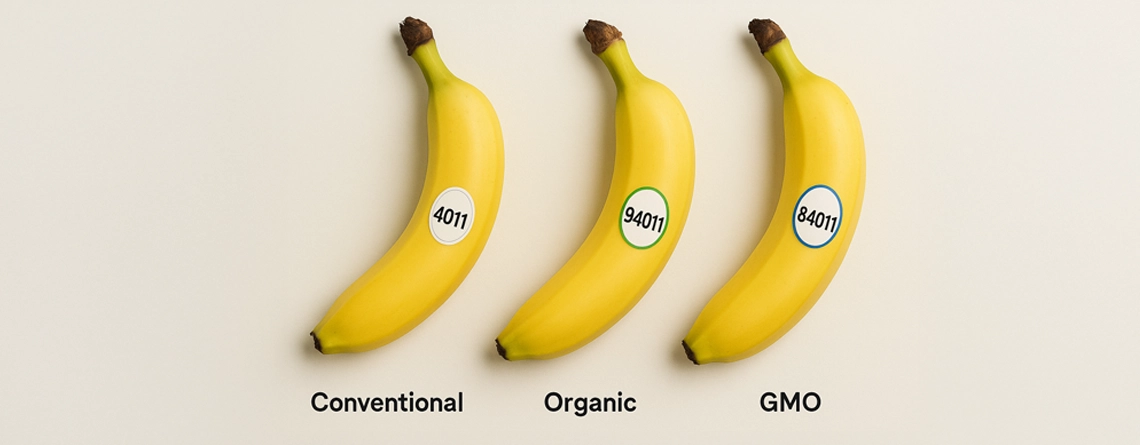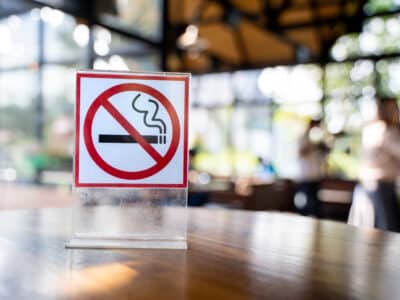Fruit Sticker Numbers: What They Actually Mean
The numbers on fruit stickers aren’t just random, they’re called PLU codes, and they tell you how your produce was grown.
Whether you’re sorting through strawberries or scanning bananas, each number gives quick insight into farming methods. You can even find similar labeling systems on food product labels used in stores.
What Is a PLU Code?
PLU stands for “Price Look-Up.” These numeric codes are assigned by the International Federation for Produce Standards (IFPS) and help grocery stores ring up fresh produce accurately. They’re usually found on the small stickers stuck to individual fruits and veggies.
- 4-digit codes (e.g., 4011): Conventionally grown produce using synthetic fertilizers and pesticides
- 5-digit codes starting with 9 (e.g., 94011): Organically grown
- 5-digit codes starting with 8 (e.g., 84011): Genetically modified (GMO)
Most grocery stores today avoid using codes that start with 8, so you might not see GMO indicators even if the item is genetically modified.
Real-Life PLU Code Examples
Here are some common fruit sticker numbers and what they mean:
- 4011: Standard, conventionally grown bananas
- 94011: Organic bananas
- 4032: Conventionally grown watermelon
- 94032: Organic watermelon
- 4272: Conventionally grown kiwi
Notice the pattern? Organic versions often use the same last four digits with a 9 in front.
Why These Numbers Matter
Understanding what numbers on fruit stickers mean helps you:
- Make informed choices about how your food is grown
- Identify organic options without relying solely on signage
- Engage kids in fun, eco-friendly trivia at the grocery store
- Avoid potential allergens or unwanted growing methods
Plus, if you’re shopping during National Berry Month, it’s a good time to brush up on which berries are organic and in season. The University of Nebraska–Lincoln offers a quick overview of what makes this month a celebration of everything from strawberries to blueberries.
Fun Fact: Are Fruit Stickers Edible?
Technically, fruit stickers aren’t designed to be eaten, even though the adhesive used is generally considered food-safe. The sticker itself is made from materials like plastic or waxed paper, which aren’t digestible and can pose a minor choking risk, especially for children.
While accidentally swallowing one probably won’t harm you, it’s best to peel them off and discard them properly.
If you’re composting, be aware that these stickers won’t break down in a home compost system and may contaminate your soil. Even if you’re tossing the peel, it’s a good habit to remove the sticker to avoid waste-related issues later on.
How Stores and Farmers Use These Codes
Sticker numbers on fruit aren’t just for consumers:
- Retailers use PLUs to automate pricing at checkout
- Farmers rely on them for traceability and logistics
- Suppliers use them to monitor inventory
They also help reduce waste by ensuring products are labeled, stocked, and sold accurately.
Labeling Tips for Food Sellers
If you package produce or sell food in a retail setting, using the right stickers matters. Clear labeling not only supports better decision-making for your customers but also builds trust and repeat business.
Consider using:
- Stickers that highlight organic, conventional, or local origin
- Color-coded labels for quick visual identification
- Labels with blank spaces to write harvest dates or batch codes
- Custom designs for branding or seasonal promotions
You can find a full range of food product labels to help your customers quickly understand what they’re buying—whether it’s how the item was grown or what it pairs well with.
Numbers on Fruit Stickers FAQs
The numbers are PLU codes that indicate how produce was grown. Four digits mean conventional, five starting with 9 means organic, and five starting with 8 means GMO (though rarely used).
Mostly, yes. PLU codes are assigned by the IFPS and are standardized internationally for consistency across grocery chains and countries.
No. While the adhesive is food-safe, the sticker isn’t digestible and should always be removed before eating.
Yes. Strawberries, blueberries, and other berries often come in containers with a single PLU code printed on the packaging.
Codes beginning with 8 were originally reserved for GMO produce, but they aren’t widely used because many retailers choose not to label GMO status directly.
Not usually. Most are made from plastic and need to be removed before composting or recycling the fruit peel.
Look for a five-digit sticker number that starts with 9. That’s the industry standard for organic produce.




